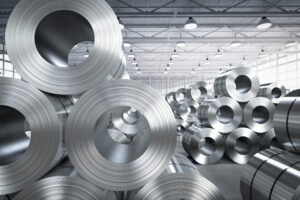Whenever someone suggests that it’s time for the organization to replace the ERP (Enterprise Resource Planning) system, there is always pushback. ERP implementations have historically been long, involved, and expensive—disrupting the business and requiring lots of overtime. Everyone has a horror story.
Fortunately, times have changed. The nature of cloud-based ERP is fundamentally different from traditional ERP, allowing your organization to “turn-on” functionality where and as you need it. Cloud-based ERP can support a measured, strategic journey to transform your business into a digital enterprise, allowing every employee to take full advantage of the data flowing through your systems.
Unlike the big upfront investment of traditional software systems, cloud-based licensing is paid as a monthly fee based on user count and functionality. The investment of time and money to improve processes is more manageable and spread out over time. Organizations can prioritize the functions most critical to their profitability and implement them at their own pace.
Many organizations use cloud-based ERP as a bridge to augment current software systems. For example:
- A metal service center using cloud-based inventory management has tighter control of materials and tracks them through outsourced processing.
- By collecting and consolidating supplier inventory data, a metal framer provides full insight into available materials to purchasing agents.
- When supply chain interruptions occur, a fabricator automatically reschedules jobs to minimize machine and operator downtime.
Workflows and optimized resources build for the future
In a recent Metal Center News article titled Yes, there is a silver lining to the cloud, we explained how different functions of the business can benefit from cloud-based ERP. “With cloud-based ERP designed specifically for the metals industry, you can improve each area of the business over time. By centralizing data, there will be one place that everyone can tap into and get the information they need. Beginning with sales, moving through production, and out the door with shipping, workflows will drive efficiency and profits.
Sales: The cloud-based ERP system should optimize inventory and scheduling in the background while the salesperson enters the job details by:
- Automatically calculate nesting, costing, and pricing at the line-item level.
- Auto-calculate accurate production time and costs for processing, both internal and outsourced.
- Build production schedules as orders are placed.
Scheduling: The software should optimize workforce and machine productivity with:
- Automatic calculation of materials usage for each job, identifying shortages and drops available for other jobs.
- Alternative resource identification, when outsourced processing is more profitable.
- Real-time scheduling adjustments that respond to unexpected changes—from change orders to machine downtime.
Production: To optimize production resources, including machines, people, tools and subcontractors, the software should:
- Record actual production, scrap, sheers, and break weights and determine additional cuts and material required due to scrap.
- Automatically route jobs through the production process, optimizing use of resources and allocating appropriate materials at each step.
- Manage outsourced processes, including materials, semi-finished products and finished goods.”
Begin the journey
To see if cloud-based ERP can help your organization update critical functions and build toward a unified business management system, let’s talk. Cloud-based ERP will help you connect your people to the information they need and drive the business processes to optimize resources. We know metals and would love to help with your digital journey.




